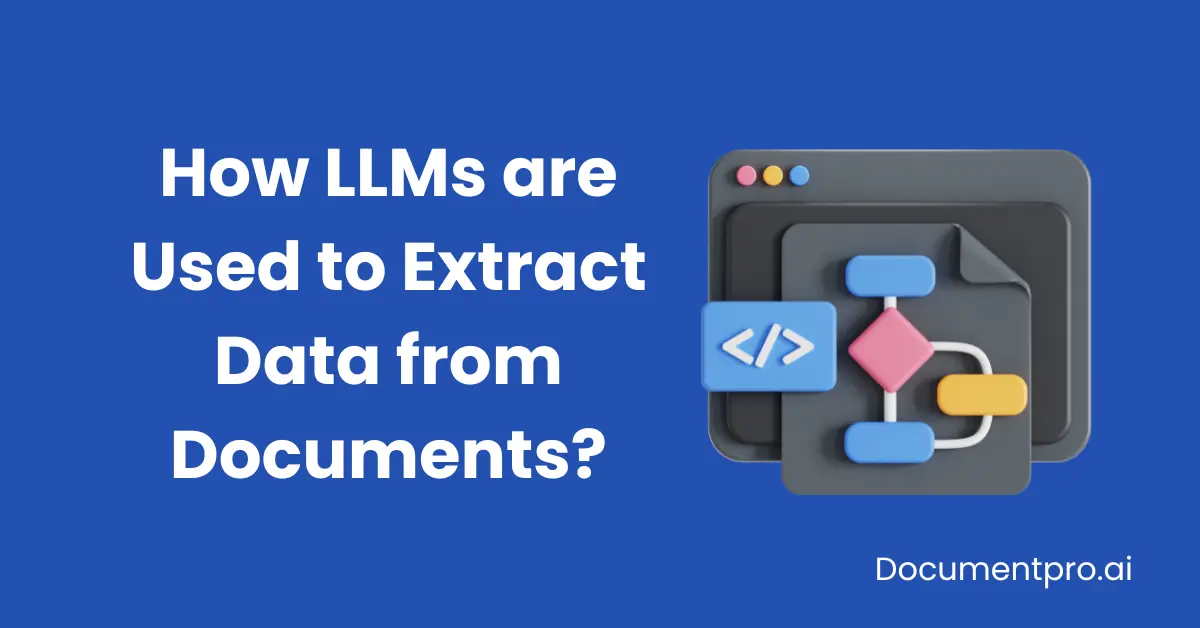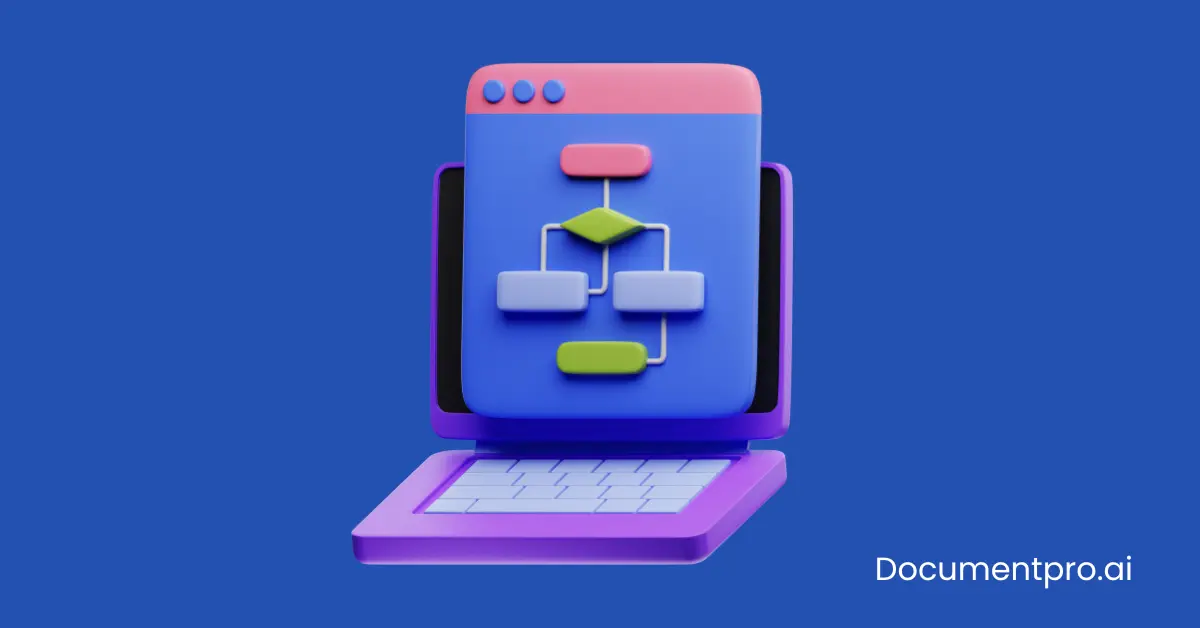
In recent years, using large language models (LLMs) to extract data from documents has gained immense popularity. These AI-driven models, trained on vast amounts of textual data, offer businesses and individuals a powerful way to automate the extraction of structured and unstructured data from various document formats.
From legal contracts to financial statements, LLMs can handle complex tasks that would have traditionally required manual effort.
This article explores how LLMs extract data from documents, highlighting the benefits, processes, and key use cases in different industries.
What are Large Language Models (LLMs)?
Large Language Models (LLMs) are artificial intelligence systems trained to understand, generate, and manipulate human language. They are based on deep learning algorithms that allow them to process and interpret large volumes of text.
Some popular LLMs include OpenAI’s GPT, Google’s BERT, and Facebook’s RoBERTa. These models excel at tasks such as text generation, translation, summarization, and, more recently, data extraction from documents.
Why Use LLMs for Data Extraction?
1. Handling Unstructured Data
Most documents, especially in business environments, contain unstructured data (e.g., emails, PDFs, and scanned images). Traditional rule-based extraction methods struggle with this complexity. LLMs, however, excel in recognizing patterns and context in unstructured text, making them ideal for extracting relevant information.
2. Automation at Scale
LLMs can process large volumes of documents quickly and accurately. This ability to scale reduces the need for human involvement, saves time, and decreases the potential for human errors during data extraction.
3. Flexibility
Unlike traditional methods, LLMs can adapt to different formats and languages, often requiring specific rules or templates for each document type. They can be trained on various document types with minimal customisation, from legal contracts to receipts.
How LLMs Extract Data from Documents?
1. Preprocessing of Documents
Before LLMs can process a document, the text must be preprocessed. This step typically involves cleaning the data by removing unnecessary information, formatting inconsistencies, and converting different file types (such as PDFs or scanned images) into readable text formats using Optical Character Recognition (OCR) if needed.
2. Training on Domain-Specific Data
LLMs require domain-specific training to ensure that they extract relevant data accurately. For example, extracting financial data from balance sheets might require training the model on accounting-specific texts. LLMs learn by recognizing the data structure, such as patterns in language, tables, or numerical values in documents.
3. Named Entity Recognition (NER)
One core technique LLMs use for data extraction is Named Entity Recognition (NER). NER identifies specific entities such as dates, names, locations, and monetary values within a document. This process helps isolate relevant data, which can then be extracted and processed according to the user’s needs.
4. Contextual Understanding
LLMs excel at understanding the context in which information appears. Unlike rule-based systems, which might pull irrelevant or incomplete data, LLMs analyze surrounding text for more accurate extraction.
For instance, if a contract mentions a payment clause, the LLM will identify related financial terms and figures based on the context.
5. Summarization and Data Structuring
After extracting raw data, LLMs can summarize complex information and present it in a structured format. This process includes creating table categories or filling in predefined templates for easier analysis and storage.
Common Use Cases for LLM-Based Data Extraction
1. Legal Document Analysis
Law firms use LLMs to scan legal contracts, agreements, and case files to extract key clauses, dates, and entities. This eliminates the need for manually reading through lengthy legal documents, improving efficiency and reducing errors in legal analysis.
2. Financial Data Extraction
LLMs can sift through financial reports, invoices, or balance sheets to extract specific data like revenues, expenditures, and tax information. This saves time for financial analysts who previously had to enter or extract this data from documents manually.
3. Healthcare Record Processing
In the healthcare sector, LLMs assist in extracting patient information, diagnoses, treatment history, and medication data from medical records. This helps hospitals and clinics maintain accurate and up-to-date information without manual entry.
4. Customer Support and Communication
LLMs are also employed to extract data from customer emails, chats, and feedback forms. Businesses can analyze customer interactions to identify common issues, sentiments, and recurring problems.
Challenges and Limitations of Using LLMs for Data Extraction
1. Data Privacy Concerns
Processing sensitive documents, such as medical records or legal contracts, raises concerns about data privacy. LLMs must be carefully configured to ensure compliance with regulations like GDPR and HIPAA.
2. Complex Document Formats
While LLMs excel at processing text-based documents, complex layouts, such as those with embedded tables or images, may still present challenges. Supplementary tools like OCR or manual correction may be required in such cases.
3. Accuracy Issues in Domain-Specific Scenarios
LLMs are not always 100% accurate, especially when dealing with highly specialized or nuanced domains. Continuous training and fine-tuning are necessary to maintain a high level of accuracy in certain use cases
Example :
Documentpro, an AI-powered tool for document data extraction, leverages the power of Large Language Models (LLMs) to automate the process of extracting structured data from various documents.
Using advanced AI techniques, DocumentPro efficiently processes documents such as invoices, contracts, purchase orders, and more, offering a streamlined solution for businesses that handle large volumes of paperwork.
The Future of LLMs in Document Data Extraction

As technology advances, the potential for LLMs in data extraction will continue to grow.
Future iterations of these models may improve their handling of complex document formats, achieve higher accuracy rates, and integrate seamlessly with existing data management systems.
Furthermore, we can expect more robust privacy-preserving techniques to address data security concerns, allowing LLMs to handle even more sensitive documents.
Conclusion
Using Large Language Models for document data extraction represents a significant leap forward in automating and streamlining this traditionally labour-intensive task. From legal and financial industries to healthcare and customer service, LLMs transform how organizations manage and extract vital information from documents. By understanding their strengths, processes, and limitations, businesses can harness the full potential of LLMs to improve efficiency and accuracy in their data extraction efforts.
With ongoing improvements and growing adoption, LLMs are poised to become indispensable tools for data extraction across various industries, offering unprecedented accuracy and scalability.
